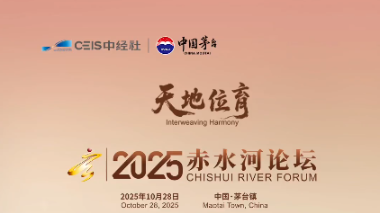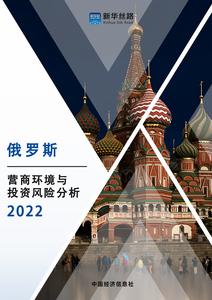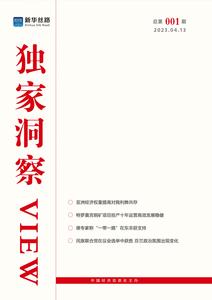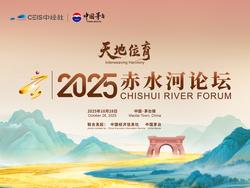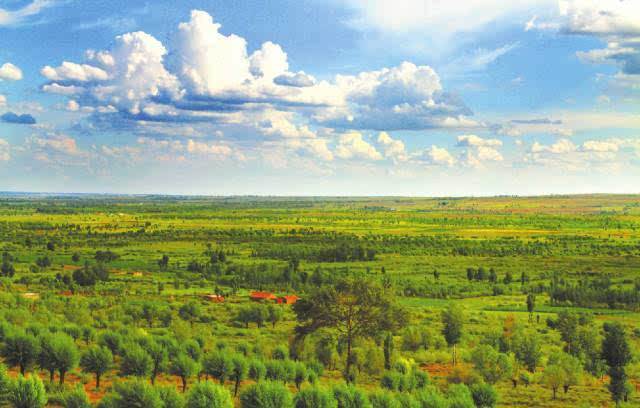
鄂尔多斯治沙
Located in the southwest of Inner Mongolia Autonomous Region in northern part of China and surrounded by the Yellow River in the West, North and East, Ordos covers a total area of 86.8 thousand square kilometers. In addition, Ordos is also an arid and semi-arid transition zone, where Kubuqi Desert is located in the north, Mu Us Sandy Land in the south, gully and hilly area in the east and undulated plateau area in the west. Ordos has an average annual rainfall of only 150 to 350 mm, but an annual evaporation volume of 2,000 to 3,000 mm, making it one of the areas with serious desertification and soil erosion among autonomous regions and in China. The fifth national desertified and sandy land monitoring results showed that the total area of desertified land reached 118.41 million mu (78,9000 square kilometers) in Ordos, accounting for 90.7% of its territory, and the total area of sandy land reached 81.08 million mu (54.1 thousand square kilometers), accounting for 62.1%. Land desertification and sandification not only lead to deterioration of ecological environment, poverty of the people in sandy areas and frequent natural disasters, but also make it impossible to achieve rapid social-economic development in these regions.
Basic situation and results of prevention and control of desertification
In the face of severe desertification and sandification, Ordos attaches great importance to the prevention and control of desertification and unremittingly carries out ecological construction centered on afforestation. Particularly, Ordos, under the guidance of the Scientific Outlook on Development, has been focusing on the construction of ecological civilization and the "Beautiful Ordos" objective since the "12th Five-Year Plan", as well as giving priority to prevention and control of desertification and protection of ecological environment for sustainable development. In view of this, its development strategy was actively adjusted, local ecological construction was vigorously promoted and the pace of green development was accelerated relying on the national key forestry projects, as well as the relationship between prevention and control of desertification and industrial development and income increase of farmers and herdsmen was coordinated, so that remarkable results have been achieved. By the end of 2016, the area of forest resources in Ordos reached 34.8 million mu, and the forest coverage rate reached 26.7%, which increased by 14.54 percentage points than that of 2000. The ecological situation achieved a historic improvement from serious deterioration to overall containment. Ordos was rated by academicians as a "typical example for arid and semi-arid areas in China to achieve coordinated and sustainable development of economy, society and environment", and awarded over 80 honorary titles including "National Afforestation Model City", "National Afforestation Advanced Collective", "National Advanced Collective in Prevention and Control of Desertification", "National Forest City", "National Garden City", "National Advanced Collective in Forestry Science and Technology" and "Top 10 Municipal Units in Forestry Information Construction of China".
(I) The sand prevention and control project has been carried out steadily, and comprehensive protection benefits have been greatly enhanced.
In the process of treating desertified and sandy land, Ordos comprehensively promoted construction of national key forestry projects such as protection of natural forests, returning farmland to forest, Three-North Shelter Forest, Beijing-Tianjin Sandstorm Source Control Phase II, closure of nature reserve pilot and demonstration area for sand prevention and control, as well as launched and implemented local forestry engineering projects such as "six-district" greening, afforestation for carbon sequestration, a shelter-forest ecosphere covering millions of mu in core areas of the city, greening in key areas and Ten-full-coverage Project. Since 2000, a total of RMB 9.6 billion for forestry construction has been allocated from the higher–level authorities; a total of 10.29 million mu of artificial afforestation has been completed through national key forestry projects such as returning farmland to forest, protection of natural forests and Beijing-Tianjin Sandstorm Source Control, as well as 8.77 million mu of aerial-seeding afforestation, 4.53 million mu of enclosed hills for natural afforestation and 0.16 million mu for forest cultivation and the renovation of degraded shelter forests. According to incomplete statistics, RMB 18.45 billion has been invested in ecological construction from local government and various communities, and over 8 million mu of high-standard afforestation have been completed through local key ecological projects. A forest defense system has formed that comprehensively comprises some "belts, networks and zones" of shelter forest, ,economic forest and raw material forest of trees, shrubs, grass, and that also combines ecological, economic and social benefits; the tree species and the mix of forest types have been optimized; stand quality has been further improved and comprehensive protection benefits have been greatly enhanced.
(II) Desertified and sandy land continued to shrink, and the ecological situation improved markedly.
Trees were planted in Ordos according to the water environment. Efforts were increased to govern sandy land in combination of engineering construction and biological measures as well as trees, shrubs, grass, enclosed and aerial-seeding forests were cultivated in parallel. The area of desertified land decreased by 5,808,000 mu than that of 2004, with an annual reduction of 0.58 million mu; the area of sandy land decreased by 0.4269 million mu, and quicksand area decreased by 6.8775 million mu from 17.1596 million mu to 10,282,000 mu. At present, 70% of Mu Us Sandy Land was under control, and for Kubuqi Desert, the figure reached 25%. The desert expansion trend has been effectively controlled, sand hazards have been eliminated basically, and production and living conditions of the farmers and herdsmen have been greatly improved. The meteorological data showed that the number of annual average gale days and frequency of sandstorm decreased significantly in Ordos, their intensity declined gradually, and the ecological environment improved markedly.
Main practices and experience
(I) Security measures were strengthened to comprehensively promote sand prevention and control.
Organizational leadership was strengthened. Priority was given to governance of desertified land in ecological construction by the Municipal Party Committee and Government. Local administrative leadership responsibility system was implemented, namely the document for objective responsibility was signed by each level and governance tasks were decomposed and implemented, so as to promote efficient governance of desertified land. Planning guide was abided by. The desertification control was integrated into the overall plan for national economic and social development, so as to achieve overall planning, scientific implementation and vigorous promotion. In addition, plans for forestry, agriculture and animal husbandry, water and soil conservation, utilization of water resources and environmental protection were formulated, so as to construct a planning system for prevention and control of desertification from the source. All citizens were mobilized to participate in prevention and control of desertification. The national key ecological construction projects were combined with greening of key areas and compulsory tree planting by the whole nation, and cadres and workers at city-, banner- and town-levels were mobilized to participate in compulsory tree planting. Extensive publicity was carried out through annual "World Day to Combat Desertification and Drought", "Law Propaganda Day", "Arbor Day" and other important festivals as well as other channels and forms such as television, radio, newspapers and SMS, so that a favorable atmosphere was created for the whole society to understand, support and participate in the prevention and control of desertification.
(II) Governance measures were strengthened to constantly optimize the ecological governance model.
Based on the city’s natural and geographical conditions, construction of key forestry ecological projects was organically combined with the "Three-district Planning" for development of agriculture and animal husbandry. Projects were preferentially arranged in areas suffering from serious hazards of sandstorms and soil erosion in the restricted development zones and prohibited development zones through overall arrangement and rational distribution, combining with greening of key areas and construction of raw material forest bases, so as to maximize the role of engineering construction. For the hilly and gully regions in the east, priority was given to soil and water conservation. Artificial afforestation and enclosed cultivation were used, so as to improve the percentage of forestry and grass coverage and reduce soil erosion. For Mu Us Sandy Land and Kubuqi Desert, the control effort was made by following the order of priority and urgency; for the governance layout, enclosure at the edge of desert (land), cutting off in the middle by roads and water, and partition such as lowland, bottomland and oasis between the hills were used for governance. For the measures, enclosure, aerial seeding afforestation, trees, shrubs, grass, belt, network and area as well as biological and engineering measures were combined for comprehensive governance. For the arid area in the west, priority was given to protection of natural native vegetation; hill (desert) closing for forestation was used, complemented with artificial afforestation, so as to construct conservation oriented eco-economic zone. For Wuding River Basin and the alluvial flatlands flooded by the Yellow River, great efforts were made in construction of shelter forest for farmland, protective belt along an embankment, bank protection forest, commercial timber production forests and economic forests centered on the development strategy along river. Green passage project was implemented along highways and railways. Industrial and mining enterprises adhered to "governance of one mountain and one ditch under one mine and one enterprise". For downtown, parks, scenic areas, ecological immigration areas, new countryside and new pastoral areas, urban green space and greenbelt were energetically developed. Greening around towns and villages and street greening were accelerated in combination of village greening matching projects for new rural construction and "construction of beautiful countryside", so as to improve the ecological environment as well as the people's production and life quality.
(III) Guidance mechanism was innovated to mobilize initiative of the whole society to participate in sand prevention and control.
Strategy of "individual-collective-national afforestation" was adhered to; restriction mechanism of "buying live trees" as well as incentive mechanism of "support to afforestation with subsidies" and "replacement of investment with award" were vigorously carried out, so as to encourage and guide enterprises, farmers and herdsmen to participate in prevention and control of desertification by contracting, buying shares, leasing and volunteer to work. Meanwhile, overall consideration was given in greening through desertification control and rich gain, in order to form a pattern of diversified investment by the nation, local government, enterprises and individuals and participation of the whole society in prevention and control of desertification. Ejin Horo Banner actively encouraged enterprises and farmers to launch afforestation in advance; it would be incorporated into the scope of project and inspection and acceptance would be carried out after the plan was issued by the state and autonomous region, and payment of the project would be made if survival rate reached the standard. For Uxin Banner, ecological construction projects would be implemented and financial subsidies would be given if concentrated afforestation reached a certain scale, the standard was reached through acceptance and project requirements were met according to the national afforestation regulation. Dalad Banner actively promoted subsidies for afforestation, arranged the masses in charge of project implementation to undertake the project construction as well as encouraged farmers and herdsmen to launch afforestation by their own and contract afforestation, and villages to organize reforestation, so as to ensure that farmers and herdsmen directly benefit from it. For Otog Banner, Incentives for Ecological Construction of Otog Banner was formulated by the People's Government, and subsidies and incentives were given to the units and individuals who made outstanding contribution to ecological construction. A number of typical sand control enterprises such as Elion and Dongda as well as advanced individuals represented by Yin Yuzhen and Wurigeng Dalai, etc. emerged in prevention and control of desertification, which led to investment of a large number of farmers and herdsmen as well as various communities in ecological construction, and a favorable social atmosphere that everyone loves greening, plants trees and protects green has formed.
(IV) Consideration was given to both greening and economy to promote governance of sandy land in a different direction.
Combination of prevention and control of desertification with industrial development was adhered to; development model of forest desert industry in "farmers + base + leading enterprises" was actively promoted relying on the construction of key forestry ecological projects, so as to foster forest desert industry, extend the industrial chain, improve the science and technology, create green brand and reversely promote ecological governance, thereby realizing the balance between ecology and livelihood and win-win in sand control and economy. First of all, the strategy of "contract transfer and concentrated development" was actively implemented and construction of raw material bases such as salix, caragana, hedysarum mongolicum, sea buckthorn and prunus armeniaca were vigorously promoted relying on key forestry projects, so that the biomass energy raw material base centered on salix, feed processing raw material forest base centered on caragana and hedysarum mongolicum as well as food and beverage raw material forest base centered on high-quality sea buckthorn and prunus armeniaca formed, which not only improved the wind-break and sand-fixation function, but laid a solid foundation for development of forest desert industry. Secondly, support to leading enterprises was strengthened. The leading forest desert enterprises with favorable development prospects, great market potential and extensive radiation drive were vigorously supported, and conditions were actively created to promote expansion of production scale, improve product quality and increase market competitiveness. Meanwhile, more efforts were made in brand cultivation, so as to play the demonstration and promotion role of leading enterprises better. In the whole city of Ordos, there are more than 80 enterprises represented by Elion and Dongda that participate in afforestation and development of industries, including 14 autonomous regional forestry industrialization leading enterprises such as Plateau Almond Syrup and Spring Mountain as well as 2 national key forestry enterprises. An annual output of 26 thousand m3 wood-based panels can be achieved, 310 million degree of power can be generated by biomass, and 35 thousand tons of beverage such as almond syrup, malus micromalus wine and sea buckthorn can be yielded. Thirdly, more than 20 ecological tourist attractions including Mausoleum of Genghis Khan, Resonant Sand Gorge, Seven Star Lake, Engebei and Salawusu were created, relying on the favorable natural environment and unique humanistic and geographical environment formed through ecological construction.
(V) Scientific and technological support was strengthened to improve scientific level of prevention and control of desertification.
Based on the actual situation of aridity, windiness and less rainfall as well as strict adherence to the order of nature and principle of water equilibrium, efforts were increased to promote the application of science and technology and the use of mechanized afforestation teams, existing large and medium-sized machinery and other afforestation resources, and optimize technical model of prevention and control of desertification, so as to improve the scientific and technological level of afforestation comprehensively. For the technical measures centered on improving the survival rate and preservation rate of afforestation, a number of advanced scientific and technological achievements and application technologies were screened and provided; a series of drought-resistant forestation technologies such as soil preparation in case of deep pits, watering planting, container seedlings, film-covering afforestation, application of water retaining agent, dipping in rooting powder and water and low-pressure water flushing afforestation have been widely used in the construction of demonstration area. Relying on the national Project 973, ecological monitoring projects for five major types of areas namely Mu Su Sandy Land, Kubuqi Desert, hilly and gully area, arid area and "ten major tributaries" were launched, so as to study the sustainable development mode of ecology regulated by water under different site conditions, species and densities, thereby enhancing the scientific level in prevention and control of desertification.
